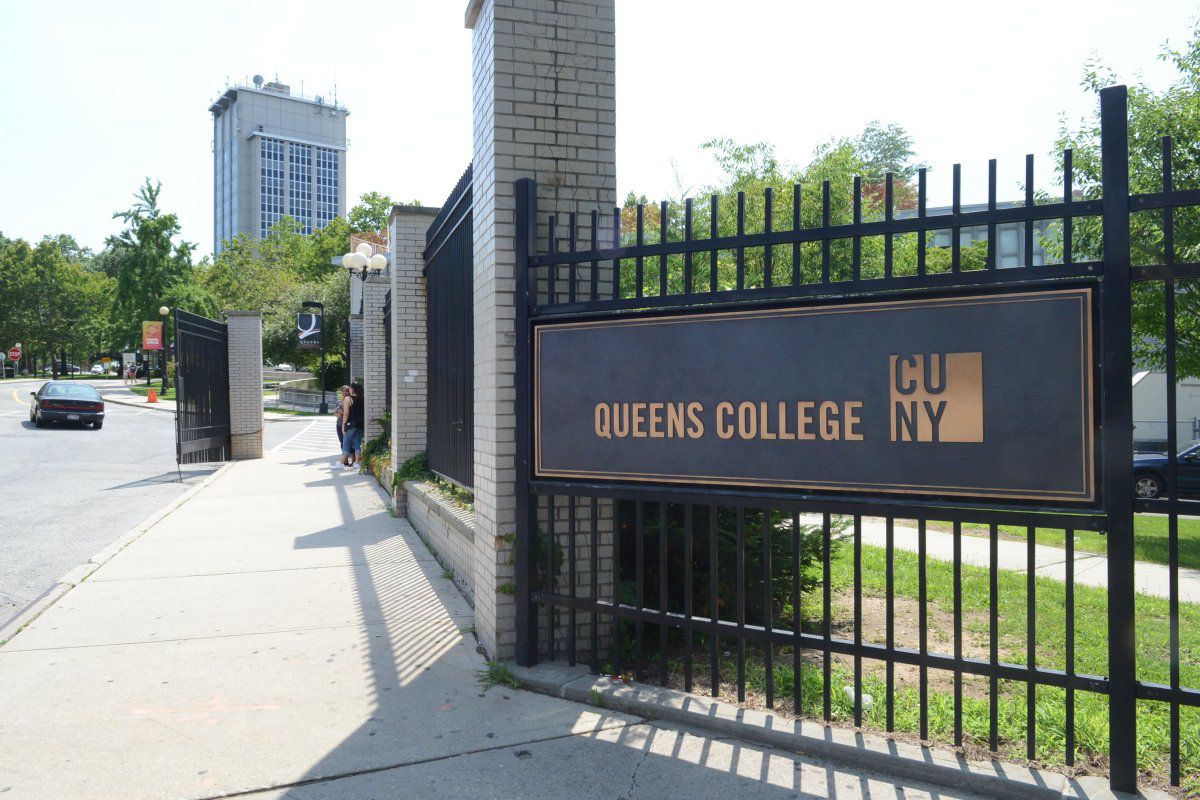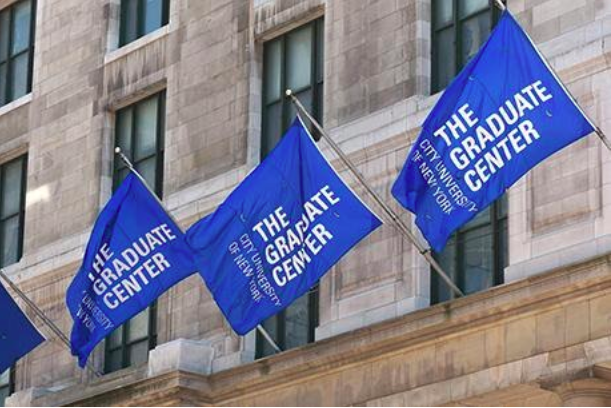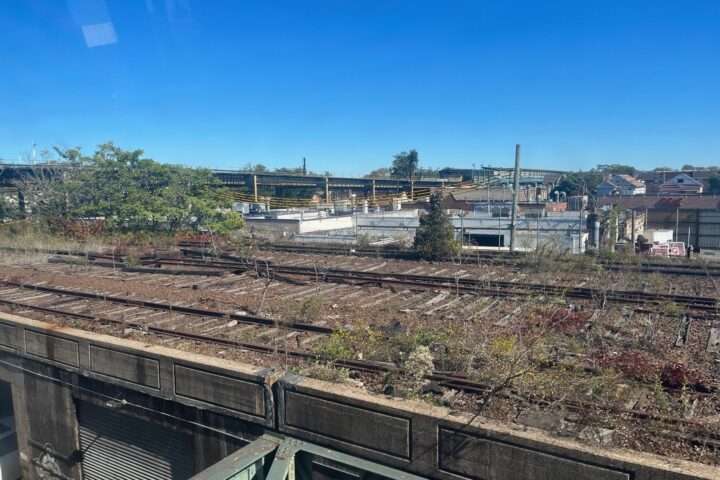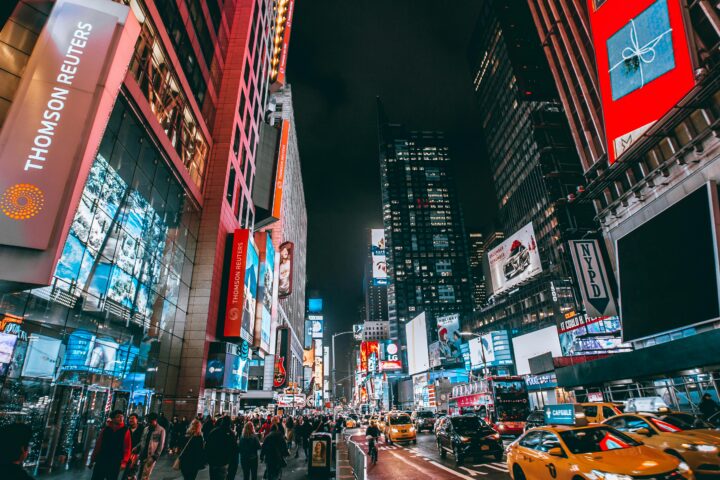Surrender to the vibrant and electric colors of one of the most influential artists of the 20th century, and perhaps the most celebrated artist in America’s history. With its walls boldly painted yellow, blue, and purple for the occasion, the Godwin-Ternbach Museum is currently featuring the work of Andy Warhol in the exhibition “Andy Warhol’s Photo-Aesthetic and Beyond” until Nov. 1, 2014.
The Andy Warhol Foundation donated seven of Warhol’s massive silkscreens to Queens College, including those featuring Muhammad Ali, Sitting Bull, the Brooklyn Bridge and Cologne Cathedral. Pieces from Warhol’s “Campbell’s Soup Cans” collection, previously owned works, were featured alongside the recent donations. The serial collection expressed Warhol’s respect for difference found in consensus.
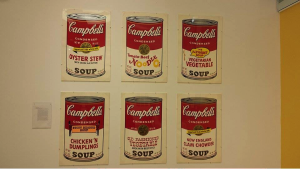
Curated by Amy Winter, director of the Godwin-Ternbach Museum, and Queens College Assistant Professor of Art History, Edward Powers, the free exhibition is composed of a diverse range of Warhol’s work. It included colored photo-silkscreens, silver gelatin prints and Polaroid photographs.
Viewers are invited to take a tour through both Warhol’s art and personal life. The exhibition went beyond Warhol’s famous works and includes sections dedicated to photographs and quotes by the artist.
“Starting a new year with a ‘name brand’ like Warhol, and in the season when everything starts hopping again after the summer lull, was great timing,” Winter said.
The opening reception for the exhibition took place on Sept. 18. Visitors enjoyed celebratory refreshments as they wandered into the vividly colored gallery. Powers, responsible for the gallery tour, emphasized to the audience the vast cultural, ethical and political significance behind each of Warhol’s works.
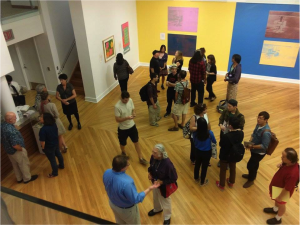
Warhol was most notably known for his work within the Pop Art genre. Emerging in the 1960s and short for the term “popular art,” the movement highlights everyday objects and consumer products as well as various forms of recognizable media such as comics, magazines and newspapers. Pop artists would then combine these mundane subjects with mechanical or commercial production techniques. Warhol’s preferred method was silk-screening a Polaroid photograph of the featured subject on to a canvas and coloring it with bright, vivid colors.
“In the Campbell’s Soup series, there are small differences in each piece. Even while the overall impression is ‘sameness’ – each is a distinct work – a different flavor but also small differences that the artist added in each work. Warhol was trying to make a statement about conformity in American society,” Winter said.
The Electric Chair photo-silkscreen prints were equally impressive. The multiple silkscreens stood as representations of state authority and power, institutional confinement, and failures of the system.
“His ‘Electric Chair’ was the very one in which Julius and Ethel Rosenberg had been executed as communist spies in 1953, but more importantly, touched on the larger issue at the time of anticommunist blacklisting and other kinds of political persecution,” Powers said.
“I think the contrast between the ‘Campbell’s Soup’ series and the ‘Electric Chair’ series are most revealing of the different sides of the artist’s personality – playful and ironic, but also politically engaged and serious,” Winter said.
Another notable piece was “Flowers,” a vibrant silk screen of Warhol created based on the uncredited photograph by Patricia Caulfield. The work begged the audience to distinguish the fine line between borrowing art and stealing, as it relied heavily on the practice of appropriation.
Warhol’s portraits on the second floor, such as “Sitting Bull,” blurred the line between fiction and history and highlighted how identity is a manmade construct shaped by pop-culture and mass media.
Also remarkable and unique were Polaroid portraits taken by Warhol accompanied by witty and humorous descriptions about the subject in the artist’s own words.
“The opportunity to so fully show how an artist creates a portrait not only through his pictures, but also in his own words, is truly rare,” Powers said.
A second gallery tour by Powers will take place on Oct. 27. The exhibition will remain open until Nov. 1.








